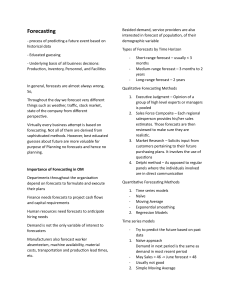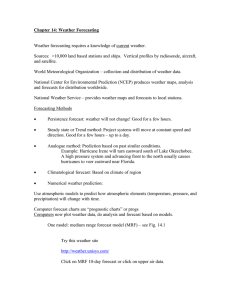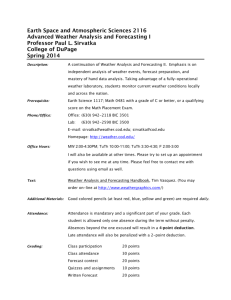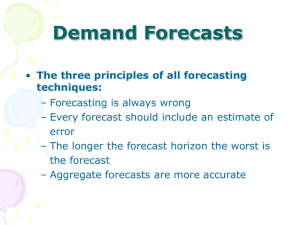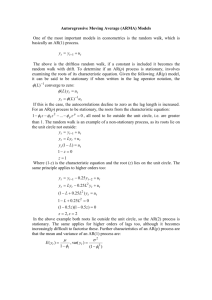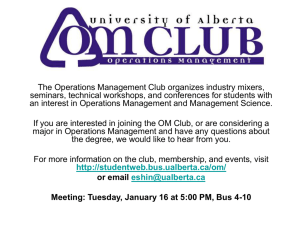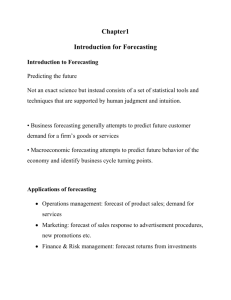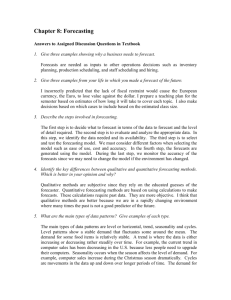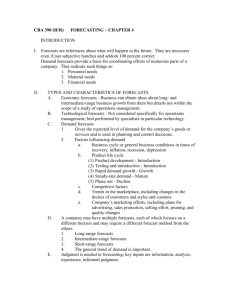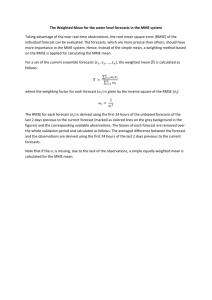Demand Management
advertisement
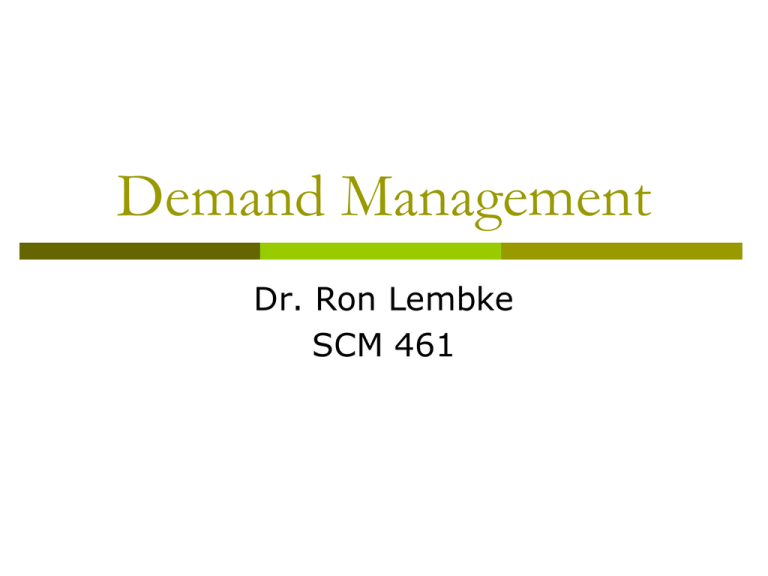
Demand Management Dr. Ron Lembke SCM 461 Role of Demand Management Collect information from all demand sources Customers Spare parts Negotiate and Confirm shipping dates, quantities Confirm order status, communicate changes Different Environments Factory to customers – plant very aware of customer needs Factory to DC – stable replenishment plan Plan vs. Forecast: Forecast is what you think demand will be like Plan is how you will respond to demand “A manager cannot be held responsible for not getting a forecast right.” How are you going to respond to changes in demand? You have control over the plan and execution, not demand Rain forecasted? You decide to bring umbrella or not. Planning a BBQ: 300 people? 500? Somebody decides Independent vs. Dependent Demand Feeding manufacturing, demand for parts is dependent on manufacturing plan Sales to customers are independent of our (production) activities. # snowboards # tops depends on # boards to be made Customer order decoupling point: when control of timing passes from customer to us Make to stock – Finished goods Assemble to Order – WIP Make to Order – Raw Materials Engineer to Order - suppliers Make to Stock Customers buy finished, generic product McDonalds’ heat lamp days Triggers signal to make more Use warehouses, DCs to fulfill demand Maybe VMI? Assemble to Order Define customer’s order in terms of alternative components and options Subway, In-N-Out Configuration management: combine options properly into a buildable final product Flexibility in combining components, options, and modules Combinations: 31 ice cream * 4 sauces * 12 sprinkles = 1,488 Homework Figure out the total number of combinations of some (one) thing you like to eat or drink: Go there, write up # of options, and spell it all out for me, how many there are # lattes: soy, decaf, etc. Ice cream Pizza Beer samplers Burritos Burgers Make/Engineer to Order No stock components to assemble Cooking at home – could make any of the standard things you usually make: burger, pizza, chili, etc., etc. Include Engineer to Order Tell me what you’d like – wedding dinner Significant design element in order creation Don’t know possibilities of what customers might buy What do you think? Which method is best? What kinds of uncertainty are involved in each? What determines customer service in each? What is the decoupling point in each system? What kinds of capacity do we need in each? Communication with Depts. SOP – give forecasts, get prod. Plans Master Production Scheduling Capacity: material (MTS), labor (MTO) Timing of deliveries & production Detailed order info to MPS Status of each order Figs 2.5, 2.6 Resource Planning Sales and Operations Planning Master Production Scheduling Demand Management Information Use Make to Knowledge Use EDI, POS data to know what your customers are going to be ordering (Not forecasting) Wal-Mart and Philips Forecast based on: Sales? Demand? Shipments? Forecasting Framework Fig. 2.7, p. 30 Aggregating Demand Long-term, or product-line forecasts more accurate than short term or detailed forecasts Monthly: Avg = 20, std dev =2 Annual: Avg = 20 * 12 = 240 Std. Dev = 2 * sqrt(12) = 6.9 95%: 16-24 which is +/- 20% 95%: 226-254, which is +/- 5.8% Easier to forecast demand for components than for sales of particular car configurations. Aggregating Demand Individual item forecasts must add up to correct total Individual item percentage of total probably constant Pyramid forecasting – bring things into alignment Force people to accept higher targets without “owning” them Predicting Demand Shared components Grand Prix Grand Am Grand Prix End of Pontiac Last American-produced Pontiac G6 – Nov. 25, 2009 Canadian market-G3 Wave, GM Daewoo, S. Korea, Dec. 2009



